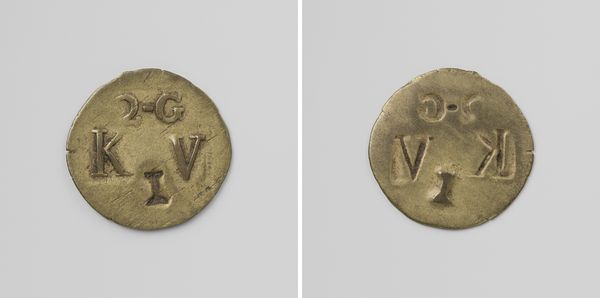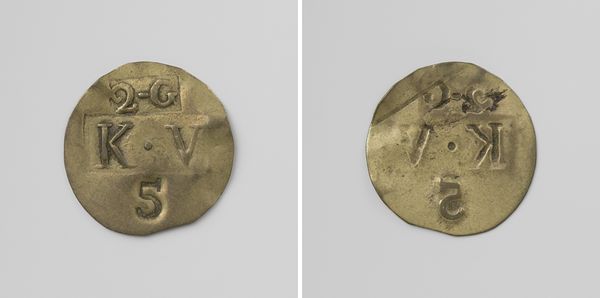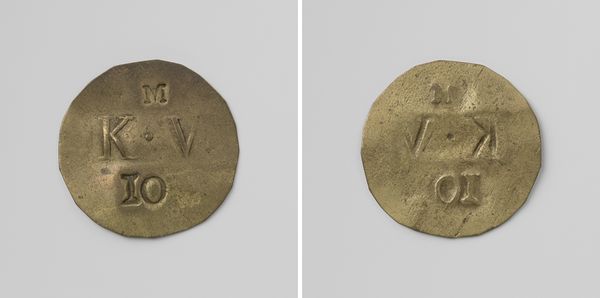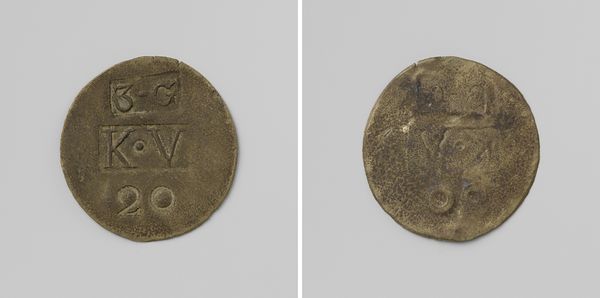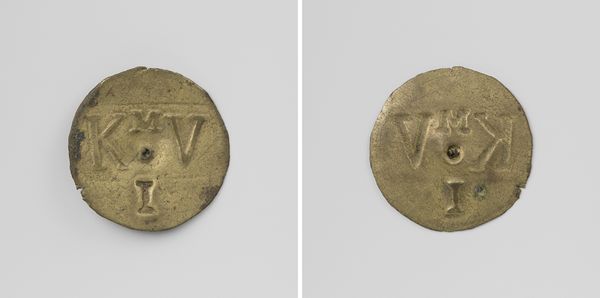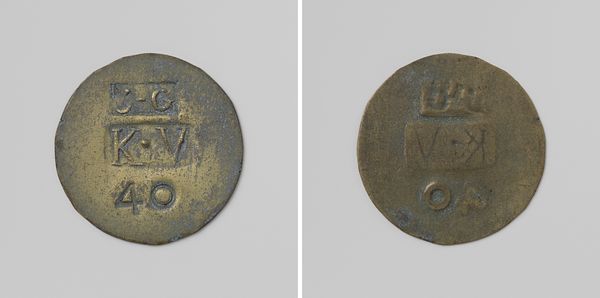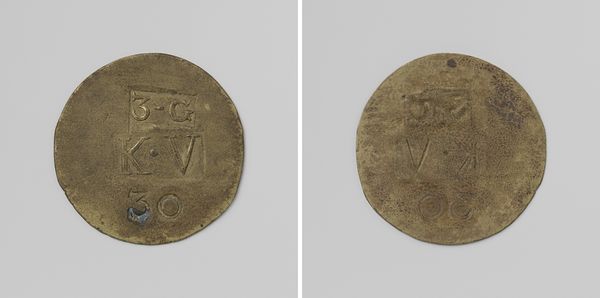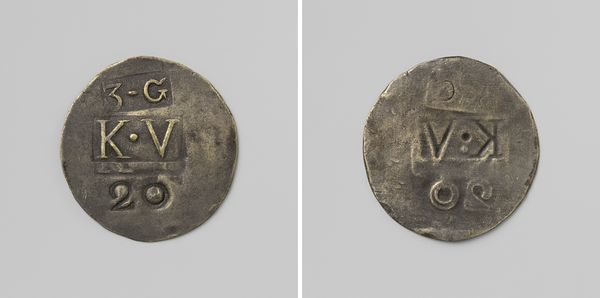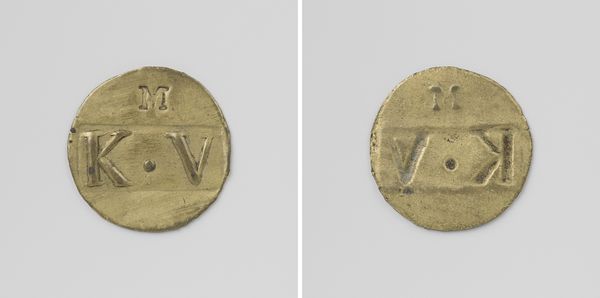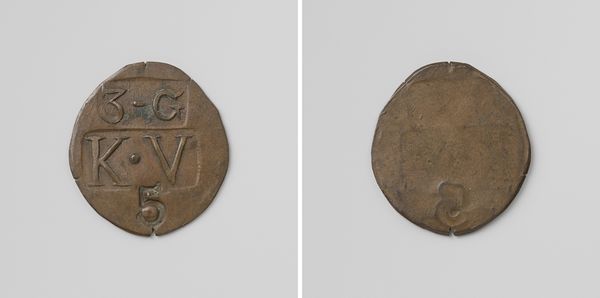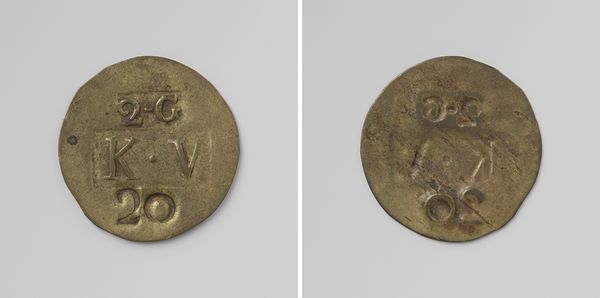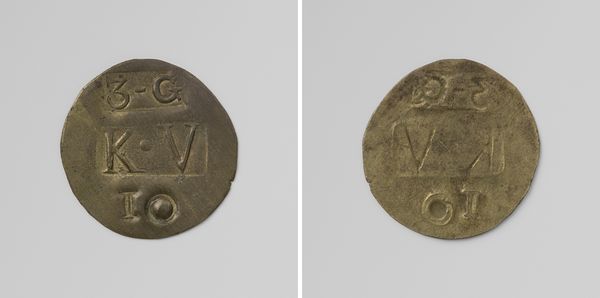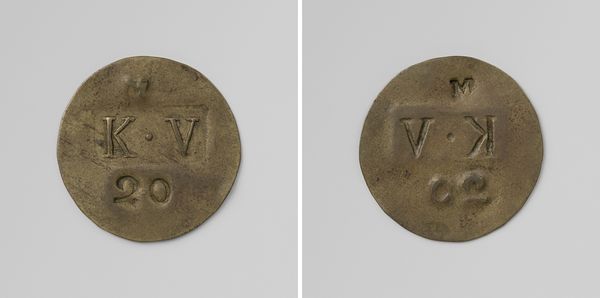
Kolonie Veenhuizen, huismunt geslagen op last van de Maatschappij van Weldadigheid ter waarde van vijf cent 1818 - 1859
0:00
0:00
anonymous
Rijksmuseum
print, metal
#
dutch-golden-age
# print
#
metal
#
geometric
#
miniature
Dimensions: diameter 2.6 cm, weight 1.52 gr
Copyright: Rijks Museum: Open Domain
Editor: Here we have an anonymous piece from between 1818 and 1859, "Kolonie Veenhuizen, huismunt geslagen op last van de Maatschappij van Weldadigheid ter waarde van vijf cent," which seems to be some sort of token or coin, judging by its metallic medium and small size. It appears quite worn and rudimentary in its design, almost like a primitive form of currency. What can you tell me about it? Curator: Indeed. The "huismunt" immediately draws my attention to the systems of labor and social control within the Kolonie Veenhuizen. This wasn’t simply money; it was a tool. Note the base metal, the crude striking – everything speaks to restricted access and a closed economic circuit. What does it suggest about the lives and the perceived value of labor within that society when transactions are reduced to this? Editor: So it's more than just a coin; it’s about control and labor. It brings up questions about its production - was it produced within the colony? Who made it, and what conditions were they under? Curator: Exactly! The materiality here is key. Consider the resources available, the technology employed. This piece embodies the intersection of the economy, punishment, and societal welfare. Did the materials come from the colony itself, or were they brought in, representing external control? Editor: That adds a lot of depth. I initially saw it as just an old coin, but understanding it as a product of a specific, controlled environment gives it a much harsher significance. It's interesting to think about how much this object can tell us about the social system from which it originated. Curator: And that's the crux of it. By focusing on its materials, production, and the economic system it facilitated, we see a much broader picture of society. We've looked beyond its surface to decipher layers of social hierarchy, control and labor that this object carries.
Comments
No comments
Be the first to comment and join the conversation on the ultimate creative platform.
